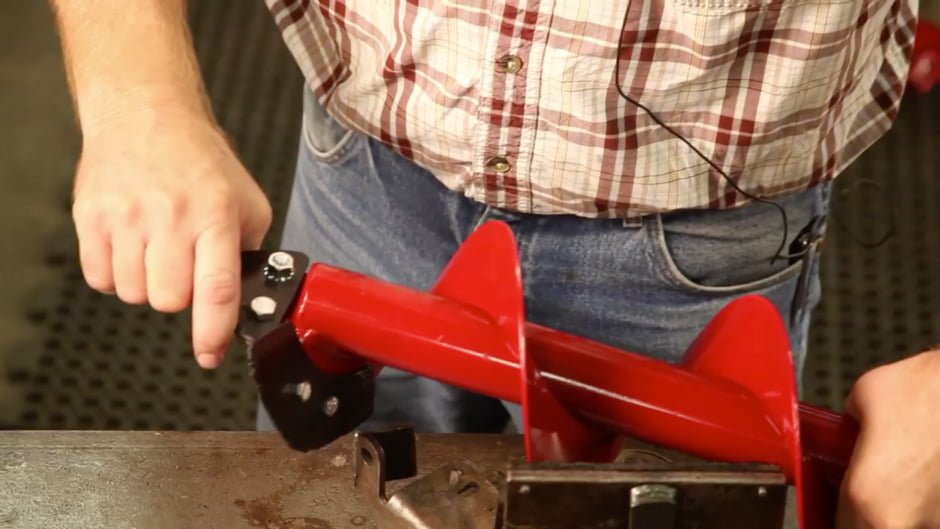
Mechanical Earth Drill Maintenance
When using an earth drill to install fence posts, deck footings or landscaping, a well-maintained machine is key to ensuring productivity. Mechanical earth drills have many moving parts and some simple maintenance goes a long way toward keeping you up and running with every drill component in top-notch shape.
Completing routine, preventative maintenance allows you to achieve the most uptime for your hole-digging projects and keeps your drills moving along.
Preventative maintenance starts with checking wear parts.
1. Transmission/Gearbox
Check the transmission oil level every 30 days or after 40 hours of operation.
Problem Indicators: Inspect the transmission or gearbox immediately if it begins making unusual sounds or experiences extreme heat. An operator can detect extreme heat if they smell burnt oil or feels warmer than usual. Unusual sounds and heat are the first problem indicators, and if ignored, the motor might start to lock up when in use. This could be a sign of low oil. If you spot oil leaks along the top of the transmission, around the bottom seal and the lower output shaft, check the fluid in the gearbox and change the oil if necessary.
2. Flexible Drive Shaft
Examine, clean and grease the flexible drive shaft after every 50 hours of operation.
Problem Indicators: Replace the shaft housing if there are deep cuts or torn wire braids in the rubber casing. Replace the core of the flex shaft if you find broken wires, sharp kinks or if the motor runs and the gearbox will not turn. Doing so ensures the shaft will function properly. Also remember to use caution when applying grease — excessive grease can gum up in the flex shaft, reducing the shaft’s life. Not enough grease can dry out the cable, which will break easily or generate enough heat to burn through the outer housing. If you hit too many hard objects, like rocks, it will result in helixing of the flex shaft. This damage can cause it to lock up or diminish performance.
3. Clutch
Check the clutch every 30 days or when you lubricate the flexible drive shaft. Clean the shoes and drums and replace if any clutch padding is missing.
Problem Indicators: The clutch slipping or the drill jerking while it’s running is a problem indicator. A clutch will continue to run even if no more clutch padding exists, which causes a weaker performance when engaging the auger and accelerating the engine from idle to full speed. If the auger spins at idle or overheats, this might also indicate that the clutch springs need replacing. Also check the bearing in the clutch drum after replacing the flex shaft. Make sure it’s loose and turns easily. A clutch drum that does not turn easily will lock up and cause the clutch to slip.
4. Other Wear Parts
- Throttle: If the speed and power of the drills seem a little off and the throttle lever doesn’t pull smoothly, try adjusting the throttle wire to minimize slack.
- Torque Tube: Before each use, inspect the torque tube for cracks. And always check that the spring-button attachment is securely snapped into place and replace it if it’s bent or broken.
- Replaceable Points and Blades on the Auger: Look at the replaceable points and blades before and after drilling to ensure they’re not excessively worn and replace if necessary. Using worn blades eventually wears down the auger and may cause a tear or damage to the flighting, resulting in a costly repair or the replacement of the entire auger. Failure to replace blades or keep them sharp causes the drill point to taper, and become cone shaped and as a result, it won’t drill effectively.
- Engine Maintenance: Depending on the model, mechanical drills differ in the engine that powers them. However a good rule of thumb is to check the engine oil level daily and change every 50 hours or annually. Change air filters every 25 hours or annually. Air filters protect the internal engine parts from dirt. Dirt can cause wear to the intake system and contaminate of the oil, which reduces the engine capability. In dusty conditions, clean and maintain the engine wear parts more often. Refer to the engine manufacturer’s instructions for proper procedures and recommended fuel and oil.
For safety reasons never operate drills with damaged or missing parts. If you have a maintenance issue or question, check out Little Beaver’s online parts and operators’ manual and online service videos or contact us for in-house technical consultation.